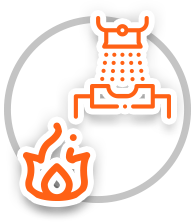CCMCO Can Satisfy Your Centrifugal Casting Requirements

Featured News
It Depends
Why THIS is the most popular answer when you ask what is causing a particular centrifugal casting defect. We often get asked about what could be causing a specific defect on a centrifugal casting. Our answer is often “It Depends”. Successful Centrifugal Casting is like a puzzle. All the pieces must fit together.
Read the Full ArticleHorizontal or Vertical
How do I know whether Horizontal or Vertical Centrifugal Casting is right for my foundry? The two main classes of centrifugal casting machines are horizontal and vertical. How do you know which one will suit your product? The horizontal method means that a mold, or die, spins about a horizontal axis.
Read the Full ArticleAdd a Spin to Static Castings For Better Results!
Centrifugal casting improves yield over static casting by eliminating gates and risers, reducing cleaning time, and lowering metal waste and melt costs. It ensures uniform, directionally solidified castings with minimal internal porosity, due to effective separation of slag and lighter particles. Permanent molds also cut molding and core-making time.
Read the Full Article8 Things you need in order to Produce Quality Centrifugal Castings
To produce quality castings, control these operations: speed (acceleration, maintenance, deceleration), mold heating, refractory coating, safe molten metal pouring, proper cooling/solidification (including water cooling), addition of flux/inoculants, efficient extraction, and overall process control of speeds, temperatures, and cooling to prevent defects.
Read the Full ArticleKnow What You're Casting?
Select a Product Below and Find Out Which Machine Can Help Your Business!
Don't see what you need here?
Contact Us
The Process

Mold Preparation Phase
- The Mold is heated to temperature
- The Mold is Coated with a refractory material.

Casting Phase
- Molten Metal is poured into the spinning mold.
- The Metal solidifies and cools, often with the aid of water cooling, taking on the shape of the mold.

Extraction Phase
- The casting is removed from the mold.



